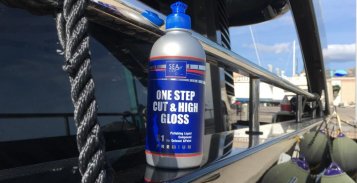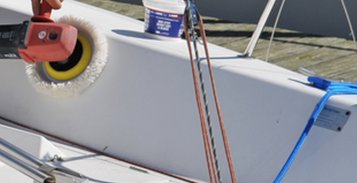
USE:
SURFACE:
EFECT:

LIGHT COLOR GELCOAT – POLISHING INSTRUCTION USE: Renewing the gelcoat surface of light color with mechanical damage and scratches that […]

DARK COLOR GELCOAT – POLISHING INSTRUCTION USE: Removal of discoloration, chalking gelcoat, dull Renewing any surface color which has a small […]

PAINT AND VARNISH – POLISHING INSTRUCTION USE: Renewing any paint or varnish color which has small mechanical damages Yellowing and […]

RENEWING THE SURFACE WITHOUT GRINDING – POLISHING INSTRUCTION USE: Renewal of any color with small mechanical damages and small scratches […]
We recommend to always sand the surface between applying two different products to ensure uniform surface roughness and adhesion of subsequent layers. The sanded surface should also be cleaned and degreased.

Επαναπλήρωση και για να αντιμετωπιστούν οι ανισότητες που προκαλούνται από ζημιές ή κατά τη διάρκεια της παραγωγής

Συγγνώμη,αυτή η εγγραφή είναι διαθέσιμη μόνο στα Πολωνικά, Αγγλικά Αμερικής, Γερμανικά, Γαλλικά, Ισπανικά Ευρώπης, Ιταλικά, Βουλγαρικά και Ρωσικά.

Παρέχει μια αισθητική και μία τέλειαόψητου σκάφους επίσης προστασία έναντι του νερού και uv ακτινοβολίας

Προστατεύει το σκάφος από την θαλάσσια ρύπανση , μαλακή και σκληρή

Αποτελεσματικάαφαιρείτις γρατσουνιές, ανανεώνει την απόχρωση του gelcoat ή του χρώματος, με επίπτωση γρήγορης λάμψης

Ειδική προετοιμασία για τον αποτελεσματικό καθαρισμό και φινίρισμα

Πλαστικοποίησης, κόλληση και συμπληρώνοντας ρωγμές στο gelcoat

Ποικιλία προϊόντων που είναι χρήσιμαστις εργασίες κατασκευής σκαφών